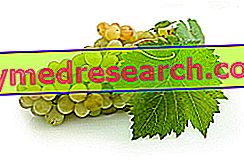Related articles: Mastitis
Definition
Mastitis is a painful inflammation that affects the breast. It appears mainly in post-partum, during breast-feeding (puerperal mastitis), often due to an infection favored by the presence of cuts or fissures on the nipples. Staphylococcus aureus is the most common etiologic pathogen.
Mastitis can also be caused by the presence of a breast engorgement; in these cases the obstruction of a galactophore duct leads to stagnation of milk, which in turn represents a sort of growth medium for the microorganisms responsible.
For these reasons, during lactation, in order to prevent the onset of mastitis, it is good that the baby attaches properly to the breast and that the breasts are alternated with each feeding.
Sometimes, inflammation of the breast can also arise due to factors independent of breastfeeding (non-puerperal mastitis), such as transient excess of estrogen or poor local hygiene.
Most common symptoms and signs *
- Anorexia
- Asthenia
- Chills
- Breast pain
- Muscle pains
- Temperature
- Breast swelling
- Breast lumps
- Orange peel udder skin
- Presence of a breast nodule
- Return of the nipple
- Serous or blood secretions from the nipple
- Bicuspid aortic valve
Further indications
Mastitis presents with characteristic symptoms: pain, tension and hardening of the affected breast. The breast appears turgid or slightly nodular on palpation. The skin of the breast appears red and hot. Furthermore, the nipple may appear retracted inside the areola.
These signs are associated with symptoms similar to flu syndromes, such as high fever, chills, loss of appetite, general malaise, weakness and muscle pain. Breast abscesses are very rare.
The diagnosis is clinical. The treatment involves the use of anti-inflammatory drugs (paracetamol or ibuprofen) and antibiotics, to be agreed with the doctor during breastfeeding. The healing of mastitis is also favored by rest and by the application of warm (before breastfeeding) and cold compresses to attenuate inflammation (after breastfeeding).



